Bees: Vital for Humanity and Life on Earth
Protecting Earth's Main Pollinators
Bees are essential to the balance of our ecosystems and the sustainability of life on our planet. These fascinating creatures are responsible for pollinating approximately 75% of the world’s food crops, contributing to over 90 crops consumed globally. Without bees, the stability of our food supply, biodiversity, and natural ecosystems would be severely threatened.
Unfortunately, over the last few decades, bee populations have dramatically declined. While there are multiple contributing factors, emerging studies suggest that electropollution may play a critical role in this alarming phenomenon.

one of the most sensitive creatures in the animal kingdom
The Impact of Electropollution on Bees
Electropollution, generated by electronic devices, wireless telecommunications, and other artificial electromagnetic signals, consists of electromagnetic interferences (EMFs) that can negatively affect health, disrupt the environment, and interfere with electronic performance. Bees, in particular, are among the species most severely impacted by electromagnetic pollution due to their reliance on the Earth’s natural electromagnetic fields.
Some of the most notable consequences of electropollution in Bees are...
Disorientation and Navigation Issues
Bees use the Earth’s magnetic field for orientation (a process called magnetoreception). Electromagnetic pollution disrupts this ability, making it difficult for bees to navigate back to their hives.
Colony Collapse Disorder (CCD)
Studies suggest that artificial NIR (non-ionizing radiation) contributes to CCD, a phenomenon where worker bees abandon their hives, leading to colony failure.
Communication Disruption
Electropollution may interfere with bees’ waggle dance, a vital communication method used to indicate the location of food and resources.
Behavioral and Cognitive Impairment
EMF exposure has been linked to reduced motor function, cognitive decline, and increased aggression in honeybee populations.
For over 80 years, scientists have studied the effects of artificial electromagnetic radiation on various species and ecosystems, with a growing emphasis on its impact on bees in recent years. Alarmingly, EMF interference may also affect the automated control and monitoring systems increasingly used in apiaries, further endangering hive management and productivity.
Scientific References about Bees & EMF
Extremely Low Frequency Electromagnetic Fields impair the Cognitive and Motor Abilities of Honey Bees (2018)

Disturbing Honeybees’ Behavior with Electromagnetic Waves: a Methodology (2017)

Colony Collapse Disorder (CCD) in Honey Bees Caused by EMF Radiation (2018)

Increased aggression and reduced aversive learning in honey bees exposed to extremely low frequency electromagnetic fields (2019)

Bees, Birds and Mankind: Destroying Nature by Electrosmog (2007)
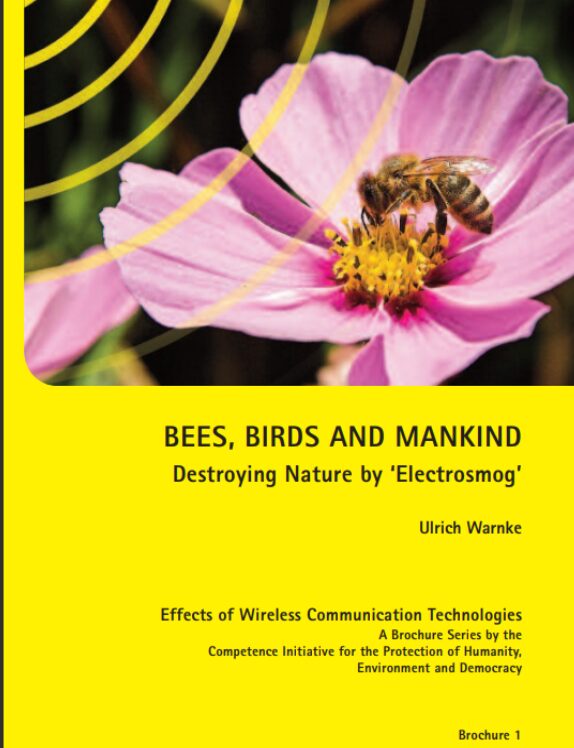
Radio-Frequency Electromagnetic Field Exposure of Western Honey Bees (2020)

Assessing Bee Vitality
The bee vitality index is a composite measure that evaluates the overall health, resilience and functionality of a bee colony by integrating multiple biological, behavioural and environmental indicators. Key parameters contributing to this index include:
-
Colony population size and brood quality: number of active worker bees, sealed brood cells and the health of developing larvae.
-
Food resources: availability of bee bread and stored pollen, which reflect nutritional status and foraging success.
-
Biochemical markers: levels of vitellogenin and other hemolymph proteins that signal immune health and nutrition.
-
Disease and parasite resistance: ability to withstand pathogens and pests such as Varroa mites.
-
Hygienic behaviour: colony’s tendency to remove diseased or dead brood, contributing to overall disease resistance.
-
Stress tolerance: resilience to environmental stressors including temperature extremes, pesticide exposure and oxidative stress.
Methods for Evaluating Bee Vitality
Researchers and beekeepers use a combination of traditional observations and modern tools to assess vitality:
-
Colony counts: manual counts of adult worker bees and sealed brood cells to gauge population and reproductive strength.
-
Biochemical assays: measuring hemolymph protein fractions—especially vitellogenin—to assess immune function and nutritional status.
-
Digital monitoring: computer‑assisted imaging and sensor technologies that track flight activity, hive weight, and food stores over time.
-
Behavioural observations: evaluating the cleanliness of the hive, brood removal (hygienic behaviour) and resistance to pathogens or Varroa mites.
-
Physiological indicators: testing for tolerance to pesticides, monitoring oxidative stress markers and analysing DNA methylation levels to assess stress and aging.
A strong vitality index indicates that a bee colony is robust, able to withstand environmental stressors, remains productive and provides effective pollination—qualities that are essential for agriculture and ecosystem health.
Project Objectives
The Apiary Protection Project by EFEIA addresses the electropollution threat to bees through four key objectives:
1.
2.
3.
4.
When Protection Becomes the Problem
The Electromagnetic Paradox: Shielding's Double-Edged Nature
A groundbreaking Favre-Johansson study reveals a critical paradox in bee conservation: while artificial electromagnetic fields harm bees through disorientation and behavioral disruption, complete electromagnetic shielding proves even more detrimental by cutting colonies off from Earth’s essential Schumann resonance—causing reproductive failure and colony collapse.
This discovery challenges conventional electromagnetic protection approaches, suggesting that selective filtering rather than total shielding represents the optimal strategy. Technologies like SPIRO® (Spin Radiation Organizer) address this nuanced need by protecting bee colonies from artificial radiation’s harmful effects while preserving their connection to Earth’s vital electromagnetic rhythms—a balanced approach potentially beneficial for all living organisms adapted to our planet’s natural electromagnetic signature.
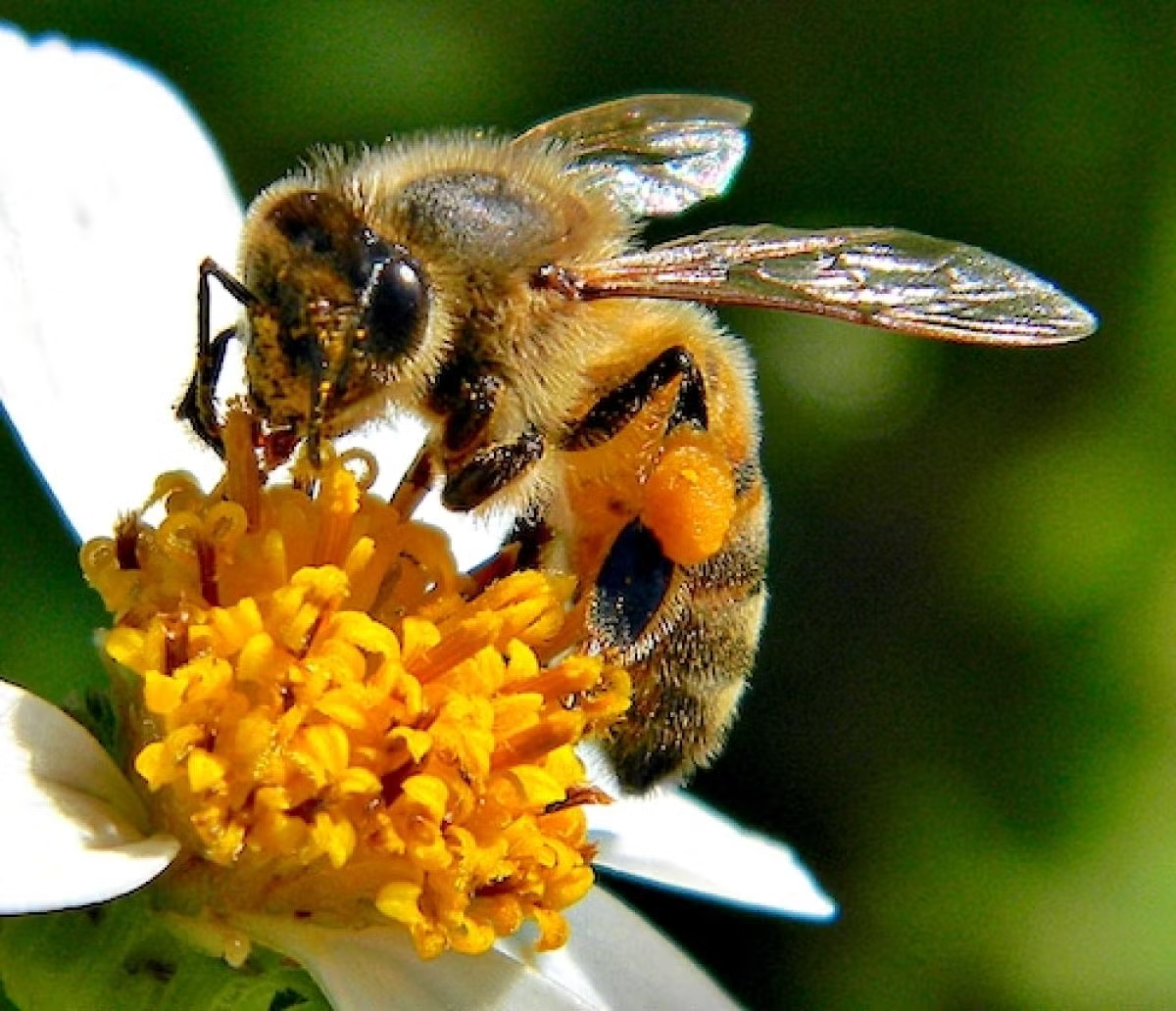

NOXTAK®’s SPIRO® Technology: Protecting Beehives
Spin Radiation Organizer (SPIRO®) is an advanced EMF protection system endorsed by our scientific partner, the NOXTAK® Center. This innovative solution effectively:
- Reduces EMF exposure around beehives.
- Protects bee colonies from the adverse effects of artificial radiation.
- Enhances the performance of automated monitoring and hive management systems.
By implementing SPIRO®, beekeepers can create safer environments for their bees while maintaining efficient, modern apiary practices.
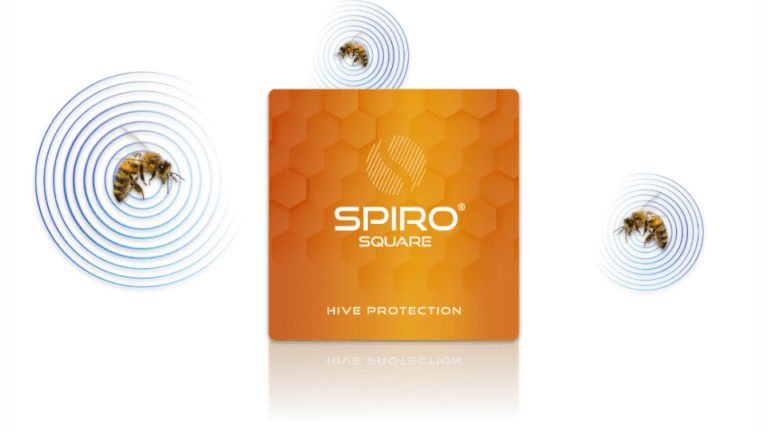

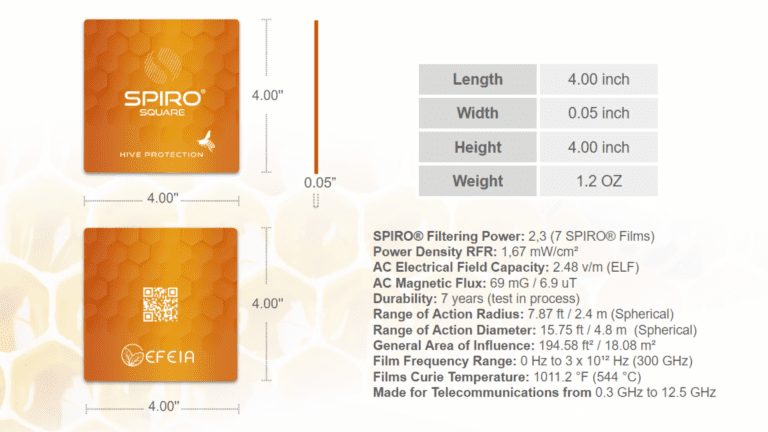
Do Your Part: Support the Bees
If you are a farmer, beekeeper, or an organization that wants to help protect bees from EMF pollution, you can take action:
- Implement SPIRO® Technology to protect your hives.
- Educate your community about the dangers of electropollution and its impact on bees.
- Join EFEIA in advocating for electromagnetically hygienic environments.
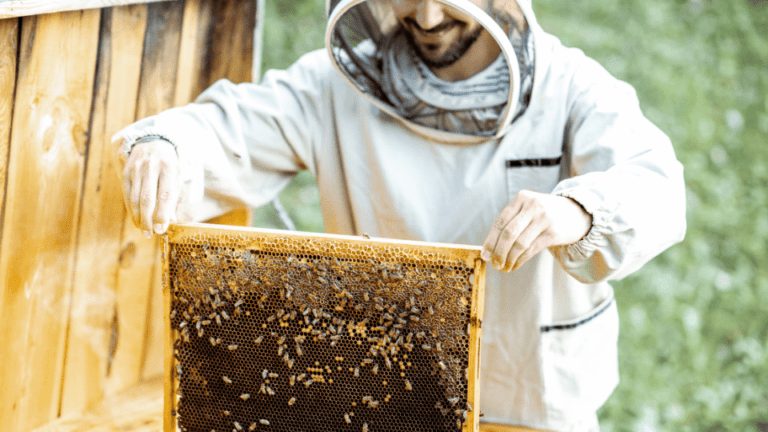
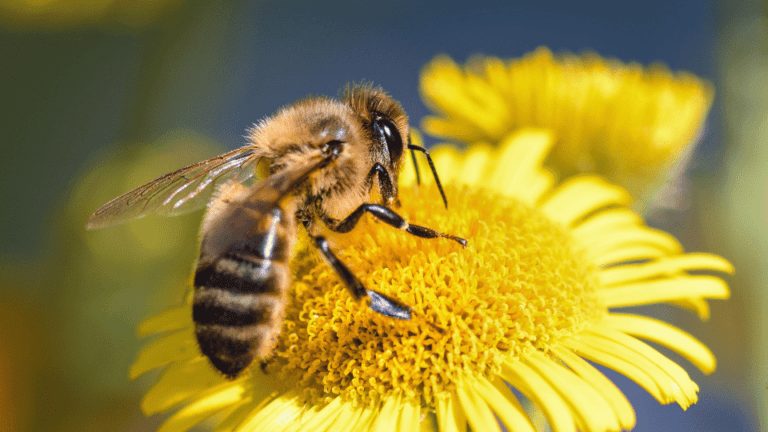
The Bigger Picture
Bees are small but mighty creatures that play an outsized role in sustaining our planet. Every step we take to reduce artificial radiation exposure helps protect bee populations, strengthen food security, and preserve the ecosystems on which we all depend.
At EFEIA, we are committed to raising awareness and developing solutions to protect bees from one of the many threats they face. Join us in this critical mission—because protecting bees means protecting life itself.
Additional Resources
-
Worker bees, sealed brood, bee bread and vitellogenin as parameters for colony vitality
-
VIBee – Establishing digital indicators of bee vitality in agricultural landscapes
-
Development of innovative methods for measuring and predicting the vitality of bee colonies
-
High nutritional status promotes vitality of honey bees and mitigates negative effects of pesticides
-
A biophysical approach to assess weather impacts on honey bee colony winter mortality
-
A systems‑based approach to the environmental risk assessment of multiple stressors in honey bees
-
Predicting Honeybee Health: The Healthy Colony Checklist, Hive Scale and Weather Data
-
The influence of protein feed on the viability of bee colonies
-
Guidance on Exposure and Effects Testing for Assessing Risks to Bees
-
Collaborative project: Establishing digital indicators of bee vitality in agricultural landscapes
Join the Movement for a Cleaner, Healthier Future
For more information about the Apiary Protection Project or to learn about SPIRO® solutions, contact us.
